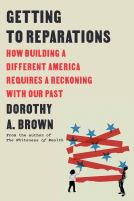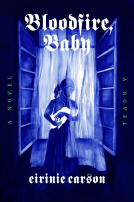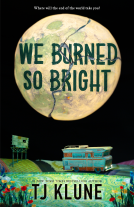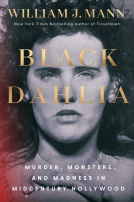
By Hands Now Known
Jim Crow's Legal Executioners
by Margaret A. Burnham
This title was previously available on NetGalley and is now archived.
Send NetGalley books directly to your Kindle or Kindle app
1
To read on a Kindle or Kindle app, please add kindle@netgalley.com as an approved email address to receive files in your Amazon account. Click here for step-by-step instructions.
2
Also find your Kindle email address within your Amazon account, and enter it here.
Pub Date Sep 27 2022 | Archive Date Aug 31 2022
Talking about this book? Use #ByHandsNowKnown #NetGalley. More hashtag tips!
Description
A paradigm-shifting investigation of Jim Crow–era violence, the legal apparatus that sustained it, and its enduring legacy, from a renowned legal scholar.
If the law cannot protect a person from a lynching, then isn’t lynching the law?
In By Hands Now Known, Margaret A. Burnham, director of Northeastern University’s Civil Rights and Restorative Justice Project, challenges our understanding of the Jim Crow era by exploring the relationship between formal law and background legal norms in a series of harrowing cases from 1920 to 1960. From rendition, the legal process by which states make claims to other states for the return of their citizens, to battles over state and federal jurisdiction and the outsize role of local sheriffs in enforcing racial hierarchy, Burnham maps the criminal legal system in the mid-twentieth-century South, and traces the unremitting line from slavery to the legal structures of this period and through to today.
Drawing on an extensive database, collected over more than a decade and exceeding 1,000 cases of racial violence, she reveals the true legal system of Jim Crow, and captures the memories of those whose stories have not yet been heard.
About the Author: Margaret A. Burnham is the founding director of the Civil Rights and Restorative Justice Project at Northeastern University, and has been a staffer for the Student Nonviolent Coordinating Committee, a civil rights lawyer, a defense attorney, and a judge. A professor of law, she was nominated by President Biden and confirmed by the US Senate to serve on the Civil Rights Cold Case Records Review Board.
Advance Praise
"Searing.... An essential reckoning with America’s history of racial violence." - Publishers Weekly, starred review
"Defying national suppression and indifference, By Hands Now Known vividly conveys the stories of those whose lives were destroyed by previously undocumented racial violence between 1920 and 1960.… Margaret A. Burnham, drawing on a painstakingly constructed database, launches a vital and restorative reckoning with the reprehensible devastation of lives, communities, justice, and memory." - Martha Minow, 300th Anniversary University Professor, Harvard University, and author of When Should Law Forgive?
"A vitally important history.… Burnham’s meticulous unpacking—of newspaper accounts, coroners’ reports, and interviews with surviving witnesses, family members, and clergy—is searing, unforgettable, and profoundly moving." - Patricia J. Williams, author of The Alchemy of Race and Rights and Giving a Damn
"If you truly want to understand why police and vigilantes who kill Black people are rarely held to account, you must read this extraordinary book.… By far the most sobering and most illuminating work I have ever read on the long history of state-sanctioned racial violence in the US." - Robin D. G. Kelley, author of Race Rebels
"Needs to be read by everyone who recognizes the historic mandate of our time: to interrupt cycles of racist violence.… Rigorously delineated, passionately argued, Margaret A. Burnham’s book offers us heart-wrenching cases.… But Burnham goes further, asking us to finally acknowledge the history of ever-present resistance, even under the most insurmountable conditions, and to consider what justice might mean today." - Angela Y. Davis, Distinguished Professor Emerita, University of California, Santa Cruz
"In this necessary and important book, Margaret A. Burnham addresses the enormous violence necessary to sustain Jim Crow through a series of compelling case studies about the lives destroyed by the brutal regime of separate but equal.… In reckoning with the impact of this history on the present, Burnham asks how we might undo or redress this legacy of violence. It is timely and essential reading." - Saidiya Hartman, author of Wayward Lives, Beautiful Experiments
"Masterfully explores how everyday acts of violence fundamentally shaped Jim Crow during the twentieth century. With meticulous and compelling new research, Margaret A. Burnham offers a powerful, moving, and groundbreaking account of the interconnections between race, law, and citizenship in US history." - Keisha N. Blain, coeditor of the number-one New York Times bestseller Four Hundred Souls and award-winning author of Until I Am Free
"[This] narratively lively yet stunningly exhaustive interrogation of Jim Crow laws retained from slavery, misconstrued after Reconstruction, and nationalized during Plessy v. Ferguson, ought to become indispensable to all legal and civil rights considerations, and the cause célebre of our time—reparations." - David Levering Lewis, Pulitzer Prize–winning author of W. E. B. Du Bois
Available Editions
| EDITION | Hardcover |
| ISBN | 9780393867855 |
| PRICE | $30.00 (USD) |
Average rating from 4 members
Featured Reviews
 Anita S, Librarian
Anita S, Librarian
By Hands Now Known netgalley review
This text examines the parts of Jim Crow laws and racialized crimes, in many cases murders, of Black Americans that were never reported, or would have been lost to history if not for some archival evidence. The brutal murder that starts off the text is heart-breaking, of a sixty-something year-old Black woman in Donaldsonville who was holding a can of oil at a store. The white shopkeeper told her to set it down and get out which she did. He then followed her outside of the store and murdered her with an ax handle. He was never held to account.
Too many people still think of Jim Crow laws an 'ancient history,' the author asserts. "They may recognize the names Rosa Parks and Fred Shuttlesworth, and know something about lynching, but they likely have little sense of the quotidian violence that shaped routine experiences like grocery shopping and tied the nation's legal institutions to its racial culture." As I write this, it's weeks after a white supremacist gunman opened fire in a grocery store in Buffalo, in a heinous hate crime that targeted Black shoppers, of whom he murdered several. The fact that what happened to this woman in Donaldsonville still happens to this day, in 2022, is beyond abominable and I don't have words for it.
The other misunderstood/little understood area that the author wants to address is the myth that Jim Crow laws only operated in the South. They very much operated, in many cases just as violently, in the North of the United States, and followed families who were fleeing from the worst of Jim Crow to places like the west coast and California. It followed these Black families and populations wherever they went.
As the author asserts, "It was not so much tied to a geographical place [Jim Crow laws] as it was a national project, supported not just by the violence of 'the locals' but by a national legal system that endorsed and sustained a missionary commitment to a future of perpetual white rule." These powerful, searing words serve as a reminder of the work and reckoning America still needs to do to reconcile with this part not only of its past but also its present.
For readers who are not aware of other little-known atrocities of racialized violence, such as the Colfax massacre in Colfax, Louisiana on Easter Sunday 1873, this text will illuminate and fill out the gaps in knowledge for those wishing to know more. In this case, although 97 members of the white mob were indicted under federal law, only 9 were charged. If this sounds familiar it's because it should...the disproportionate amount of white perpetrators of racialized crimes overwhelmingly get not very much in the way of legal consequences, if at all, or if they do, they get reduced sentences. Compare this to the overly high amounts of incarceration and criminalization of Black populations and the results are staggering.
What happened to George Floyd was an extension of Jim Crow--the police officers who murdered him indeed performed a public execution in 2020, and it is not radical at all to say that it was a lynching. Anyone who knows the deeper history and implications of lynchings also knows this to be true.
The author discusses significant cases such as that of Reverend A.H. Hampton from the 1860s.
Any reader seeking to understand better the links of why transatlantic slavery and Jim Crow laws have continued to reverberate and are still issues that play out against Black Americans to this day needs to read this powerful, well-researched text.
Of particular interest, the author devotes much of the text to exploring several cases that occurred in Louisiana, the primary area of my research.
Readers who also want to know more about the history of the NAACP and how they worked to fight against racialized violence will benefit from this text.
This book is so much more than segregated seating on buses and other forms of public transport, or vicious murders that happened and went unreported in many cases. It also examines the ways the law was built to maximize punitive measures against Black Americans in the Reconstruction Era that are still in many ways in effect today.
As well, the book details forms of protest that Black populations engaged in and are now engaging in, particularly in Birmingham Alabama. While everyone knows the name Emmett Till (or should), few have heard of Robert Sands, fifteen years old, who was shot in 1950 as he passed through a white neighborhood in Birmingham. He died from his wounds.
There's also a section toward the end of the book that goes into the issue of reparations, and key considerations that must be taken into account.
Readers who liked this book also liked:
John Patrick Green
Children's Fiction, Comics, Graphic Novels, Manga, Middle Grade
Marie Bostwick
Historical Fiction, Literary Fiction, Women's Fiction
Joe Tidy
Business, Leadership, Finance, Computers & Technology, Professional & Technical


















